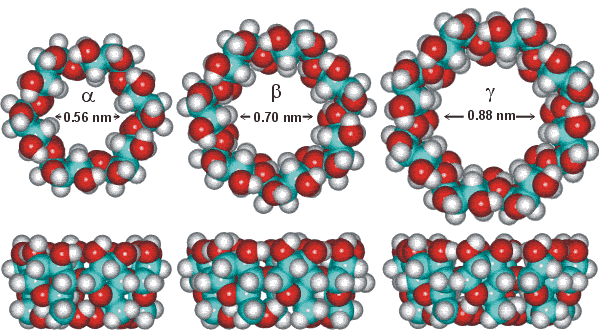 The State Council issued the "Guidance Opinion on Deepening the Market-oriented Reform of Thermal Power Coal," announcing that it will cancel the double-track system for coal prices, signing contracts between coal companies and power companies on their own, and negotiating prices independently; and when fluctuations in coal prices exceed 5% With annual cycles, adjust the on-grid tariffs accordingly.
The State Council issued the "Guidance Opinion on Deepening the Market-oriented Reform of Thermal Power Coal," announcing that it will cancel the double-track system for coal prices, signing contracts between coal companies and power companies on their own, and negotiating prices independently; and when fluctuations in coal prices exceed 5% With annual cycles, adjust the on-grid tariffs accordingly. Industry insiders told Sina Finance that this is a signal of deepening reforms in electricity prices. Power companies will appropriately resolve some of the pressures, and the fluctuations in coal prices will be more stable; however, the coal price mechanism will be able to achieve marketization and whether coal price linkage can It is still a question mark whether the implementation of the electricity price market can be pushed forward.
The State Council issued a document to cancel the dual-track system for coal prices
As we all know, since the 1990s, China's coal orders and prices have been implemented in a dual-track system, that is, the key contract coal and market coal in parallel. The former was signed by coal companies and power companies at the beginning of the year and was priced. The price was generally lower than market coal; the latter was determined by market supply and demand.
The State Council pointed out in its guidance today that there are significant differences in the supply of resources, capacity allocation, and price levels between contracted coal and market coal, which limits the function of the market mechanism, causes unfair competition, and disputes occur when the contract is signed. The cash rate is low, so reform must be implemented.
Today, the State Council issued the "Guidance Opinion on Deepening the Reform of Coal-fired Power Markets." Since 2013, it has cancelled key contracts and cancelled the dual-track system for coal prices. The Development and Reform Commission no longer issued an intentional framework for the annual inter-provincial coal railway transportation capacity allocation.
The opinion also pointed out that the coal price linkage mechanism will continue to be implemented and continuously improved. For example, when the coal price volatility exceeds 5%, the annual on-grid tariff will be adjusted accordingly, and the power companies will absorb coal price fluctuations. The proportion is adjusted from 30% to 10%.
In this regard, Li Ying, chief economist of the State Grid Energy Research Institute, commented on Weibo that the market price of electricity will directly regulate electricity supply and demand through price adjustment. “Actually, electrical reform includes many aspects such as the power management system and the power industry system and mechanism. These reforms have been ongoing, but it can be considered that this (document issued) is a signal of deepening reform.â€
In the short term, there will not be major fluctuations in coal prices
This opinion stipulates that after 2013, coal companies and power companies will automatically sign up for contracts, negotiate prices independently, and encourage both parties to sign medium and long-term contracts, and local people's governments at all levels must not intervene in the normal operations of coal-fired power companies.
Since the beginning of this year, the macroeconomic situation in China has not been too boomy. The situation of coal supply and demand has emerged in recent years with little loosening. The difference between contract coal prices and market coal prices has narrowed significantly. The government cancelled the key contract coal and no longer interfered with the price. This means that the coal price will be market-oriented and it will be of great benefit to coal companies.
At present, the price of thermal coal is showing a declining trend. For future changes in prices, An Zhiyuan, an analyst at Qinhuangdao Coal Power Network, said that at present, the coal market is still at a low point. In the short term, in 2013, the market will not change much in the supply and demand situation of electric coal, and the price of electric coal will not change too much. Great changes will occur.
Li Ying also pointed out that prior to this, the prices of key contract coals were generally lower than those of the spot market. In the future (coal enterprises and power companies), if there are long-term contracts, coal prices will be (more) stable.
Power company pressure will be resolved
The above guidelines mentioned that when the price fluctuation of thermal coal exceeds 5%, with the annual cycle, the on-grid tariff will be adjusted accordingly, and the proportion of fluctuations in the price of coal consumed by power companies will be adjusted from 30% to 10%.
As a result, the burden on the power companies will be reduced. Lin Boqiang, director of the Energy Economics Research Center at Xiamen University, pointed out that when the original power companies absorbed 30% of the volatility of coal prices, companies simply couldn’t cope. “Moisture has been squeezed out.†The loss is extremely serious; and when the consumption ratio is reduced to 10%, power companies can respond by improving their management efficiency.
However, it should be noted that under the current situation where the price of coal is falling, this is naturally good for power companies. However, once the price of coal has risen significantly in one year, the cost of power companies has also risen. However, since the adjustment period for on-grid tariffs is one year, and the on-grid price is too late to change, power companies still suffer losses.
Martec China (Shanghai) Investment Management Consulting Co., Ltd. Director of Energy Power Weibo bluntly, due to the frequent adjustment of the on-grid tariff will inevitably lead to frequent adjustment of the terminal sales price, and the country taking into account the CPI and other people's livelihood factors, will inevitably continue to control the downstream Sales price, so the part of the increase in on-grid tariffs will be eaten by the grid, "This is actually a concession to the grid."
On-grid tariff volatility will eventually be passed to users
The user electricity price is made up of the on-grid electricity price, the grid transmission and distribution price, transmission and distribution losses, and the government's performance. When the on-grid price tends to be market-oriented, consumers will worry whether price fluctuations will be transmitted to users.
Li Ying said on Weibo that changes in on-grid tariffs will directly affect all users, including residents. The deepening of reforms in the coal market and the adjustment of the coal-fired linkage mechanism will be reflected in the electricity prices of the consumers, and will affect residents, etc. The size of the user electricity price depends mainly on the change in coal prices.
"After there is no key contract, if the coal and electricity companies can negotiate a long-term contract, it will be beneficial to the stability of coal prices. Otherwise, all coal price volatility will have a greater impact on the on-grid tariff and the user electricity price," said Li Ying.
For the implementation of the marketization of electricity prices, Li Ying added that it has already been piloted by large users, but it is difficult to fully promote it.
Natural Cyclodextrins
The most common cyclodextrins are alpha, beta, and gamma cyclodextrins having six (α), seven (β), or eight (γ) anhydroglucose units in the ring structure. Among them, beta Cyclodextrin is mostly common used.
Different sizes lead to different physicochemical characteristics for the respective molecules:
|
Characteristics |
Alpha (α) |
Beta (β) |
Gamma (γ) |
|
Number of glucose units |
6 |
7 |
8 |
|
Molecular weight |
972 |
1135 |
1297 |
|
Water solubility(g/100ml), 25° C |
14.5 |
1.85 |
23.2 |
|
Cavity diameter (nm) |
0.57 |
0.78 |
0.95 |
|
Height of torus (nm) |
0.78 |
0.78 |
0.78 |
Chemically modified Cyclodextrins
Cyclodextrins can be modified by various procedures such as:
Substituting one or more hydrogen atoms in the primary and/or secondary hydroxyl groups (esters, ethers, glycosylcyclodextrin)
Substituting one or more primary and/or secondary hydroxyl groups
Chemically modified Cyclodextrins (CDM's) exhibit substantially increased aqueous solubility with concomitant retention of the inclusion complexing properties of the starting Cyclodextrin. They therefore appear to offer specific applications within various industries, such as foods, pharmaceuticals, personal care/cosmetics, diagnostics, etc. Hydroxyalkyl b Cyclodextrins such as Hydroxypropyl b Cyclodextrin are examples of those chemically modified Cyclodextrins.

Natural Alpha Beta Gamma Cyclodextrin
Natural Beta Cyclodextrin,Natural Alpha Cyclodextrin,Natural Gamma Cyclodextrin
Zhiyuan Biotchnology , http://www.zycydextrin.com
